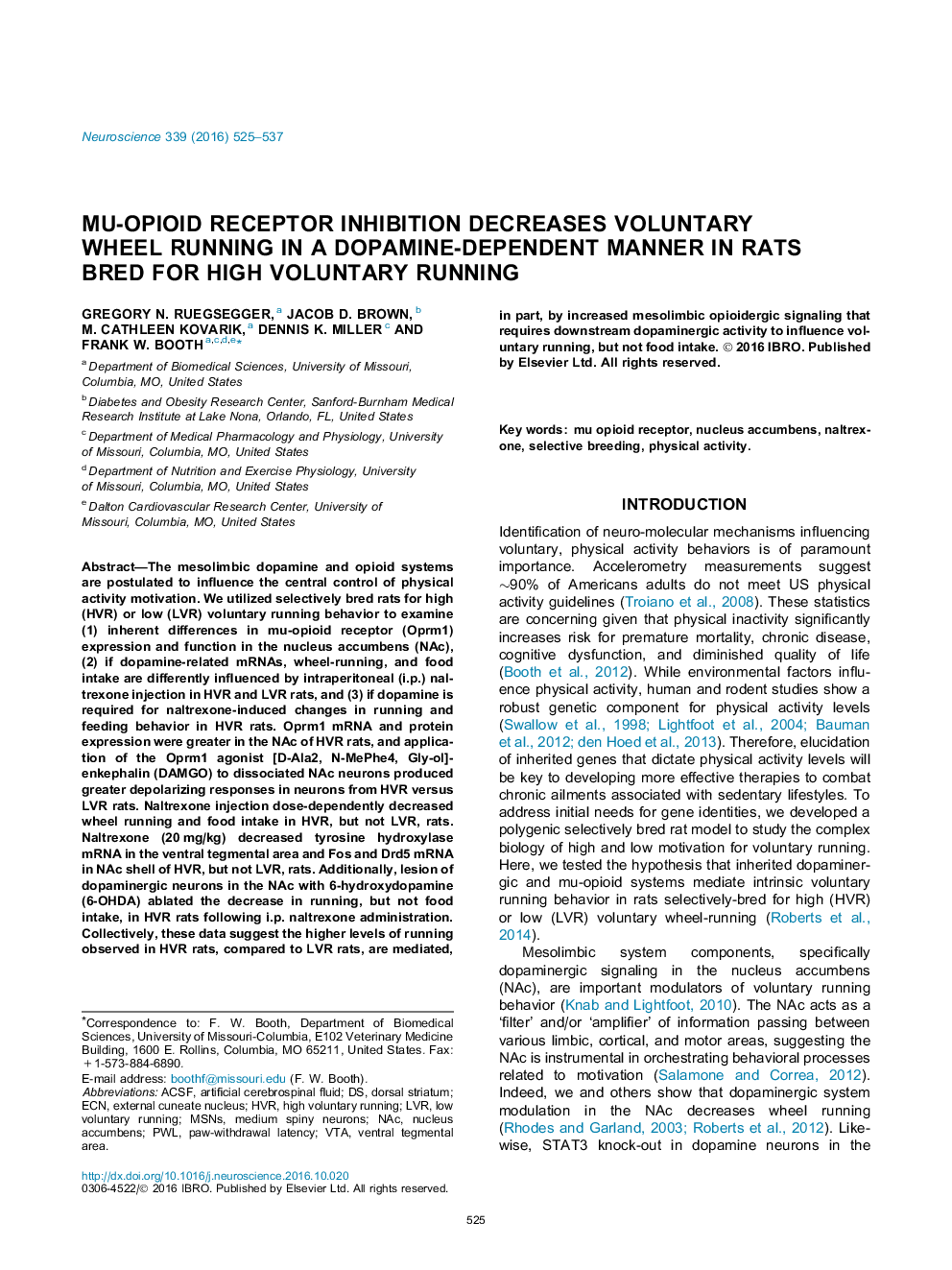| کد مقاله | کد نشریه | سال انتشار | مقاله انگلیسی | نسخه تمام متن |
|---|---|---|---|---|
| 6270633 | 1614737 | 2016 | 13 صفحه PDF | دانلود رایگان |

- Intrinsic Oprm1 function was increased in the NAc of HVR compared to LVR rats.
- Intraperitoneal naltrexone reduced dopamine-related mRNAs, running and free feeding in HVR but not LVR rats.
- 6-OHDA infusion in the NAc ablated naltrexone-induced reductions in running in HVR rats.
- 6-OHDA infusion in the NAc did not effect free food intake in HVR rats.
- Opioid signaling may influence running motivation in a dopamine-dependent manner.
The mesolimbic dopamine and opioid systems are postulated to influence the central control of physical activity motivation. We utilized selectively bred rats for high (HVR) or low (LVR) voluntary running behavior to examine (1) inherent differences in mu-opioid receptor (Oprm1) expression and function in the nucleus accumbens (NAc), (2) if dopamine-related mRNAs, wheel-running, and food intake are differently influenced by intraperitoneal (i.p.) naltrexone injection in HVR and LVR rats, and (3) if dopamine is required for naltrexone-induced changes in running and feeding behavior in HVR rats. Oprm1 mRNA and protein expression were greater in the NAc of HVR rats, and application of the Oprm1 agonist [D-Ala2, N-MePhe4, Gly-ol]-enkephalin (DAMGO) to dissociated NAc neurons produced greater depolarizing responses in neurons from HVR versus LVR rats. Naltrexone injection dose-dependently decreased wheel running and food intake in HVR, but not LVR, rats. Naltrexone (20Â mg/kg) decreased tyrosine hydroxylase mRNA in the ventral tegmental area and Fos and Drd5 mRNA in NAc shell of HVR, but not LVR, rats. Additionally, lesion of dopaminergic neurons in the NAc with 6-hydroxydopamine (6-OHDA) ablated the decrease in running, but not food intake, in HVR rats following i.p. naltrexone administration. Collectively, these data suggest the higher levels of running observed in HVR rats, compared to LVR rats, are mediated, in part, by increased mesolimbic opioidergic signaling that requires downstream dopaminergic activity to influence voluntary running, but not food intake.
Journal: Neuroscience - Volume 339, 17 December 2016, Pages 525-537